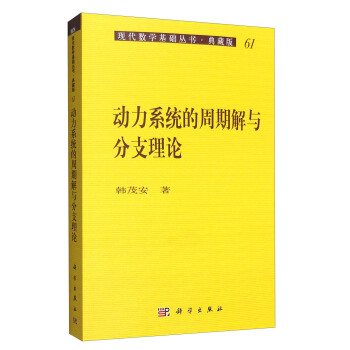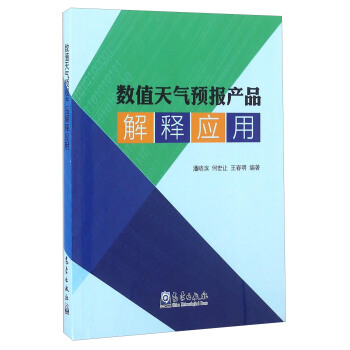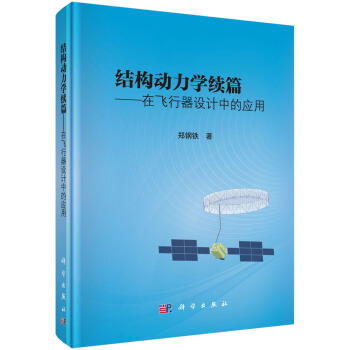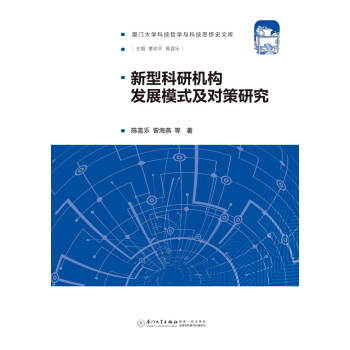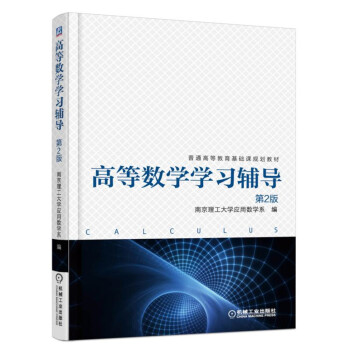![国外数学名著系列64(续一 影印版):经典力学与天体力学中的数学问题 [Mathematical Aspects of Classical and Celestial Mechanics(Third Edition)]](https://pic.windowsfront.com/11896198/5704d4acNc30a10c4.jpg)

具体描述
内容简介
This work describes the fundamental principles, problems, and methods of classical mechanics. The main attention is devoted to the mathematical side of the subject. The authors have endeavored to give an exposition stressing the working apparatus of classical mechanics. The book is significantly expanded compared to the previous edition. The authors have added two chapters on the variational principles and methods of classical mechanics as well as on tensor invariants of equations of dynamics. Moreover, various other sections have been revised, added or expanded. The main purpose of the book is to acquaint the reader with classical mechanics as a whole, in both its classical and its contemporary aspects.内页插图
目录
1 Basic Principles of Classical Mechanics1.1 Newtonian Mechanics
1.1.1 Space, Time, Motion
1.1.2 Newton-Laplace Principle of Determinacy
1.1.3 Principle of Relativity
1.1.4 Principle of Relativity and Forces of Inertia
1.1.5 Basic Dynamical Quantities. Conservation Laws
1.2 Lagrangian Mechanics
1.2.1 Preliminary Remarks
1.2.2 Variations and Extremals
1.2.3 Lagrange's Equations
1.2.4 Poincare's Equations
1.2.5 Motion with Constraints
1.3 Hamiltonian Mechanics
1.3.1 Symplectic Structures and Hamilton's Equations
1.3.2 Generating Functions
1.3.3 Symplectic Structure of the Cotangent Bundle
1.3.4 The Problem of n Point Vortices
1.3.5 Action in the Phase Space
1.3.6 Integral Invariant
1.3.7 Applications to Dynamics of Ideal Fluid
1.4 Vakonomic Mechanics
1.4.1 Lagrange's Problem
1.4.2 Vakonomic Mechanics
1.4.3 Principle of Determinacy
1.4.4 Hamilton's Equations in Redundant Coordinates ...
1.5 Hamiltonian Formalism with Constraints
1.5.1 Dirac's Problem
1.5.2 Duality
1.6 Realization of Constraints
1.6.1 Various Methods of Realization of Constraints
1.6.2 Holonomic Constraints
1.6.3 Anisotropic Friction
1.6.4 Adjoint Masses
1.6.5 Adjoint Masses and Anisotropic Friction
1.6.6 Small Masses
2 The n-Body Problem
2.1 The Two-Body Problem
2.1.1 Orbits
2.1.2 AnomMies
2.1.3 Collisions and Regularization
2.1.4 Geometry of Kepler's Problem
2.2 Collisions and Regularization
2.2.1 Necessary Condition for Stability
2.2.2 Simultaneous Collisions
2.2.3 Binary Collisions
2.2.4 Singularities of Solutions of the n-Body Problem
2.3 Particular Solutions
2.3.1 Central Configurations
2.3.2 Homographic Solutions
2.3.3 Effective Potential and Relative Equilibria
2.3.4 Periodic Solutions in the Case of Bodies of Equal Masses
2.4 Final Motions in the Three-Body Problem
2.4.1 Classification of the Final Motions According to Chazy.
2.4.2 Symmetry of the Past and Future ~.
2.5 Restricted Three-Body Problem
2.5.1 Equations of Motion. The Jacobi Integral
2.5.2 Relative Equilibria and Hill Regions
2.5.3 Hill's Problem
2.6 Ergodic Theorems of Celestial Mechanics
2.6.1 Stability in the Sense of Poisson
2.6.2 Probability of Capture
2.7 Dynamics in Spaces of Constant Curvature
2.7.1 GenerMized Bertrand Problem
2.7.2 Kepler's Laws
2.7.3 Celestial Mechanics in Spaces of Constant Curvature
2.7.4 Potential Theory in Spaces of Constant Curvature
3 Symmetry Groups and Order Reduction
3.1 Symmetries and Linear Integrals
3.1.1 NSther's Theorem
3.1.2 Symmetries in Non-Holonomic Mechanics
3.1.3 Symmetries in Vakonomic Mechanics
3.1.4 Symmetries in Hamiltonian Mechanics
3.2 Reduction of Systems with Symmetries
3.2.1 Order Reduction (Lagrangian Aspect)
3.2.2 Order Reduction (Hamiltonian Aspect)
3.2.3 Examples: Free Rotation of a Rigid Body and the Three-Body Problem
3.3 Relative Equilibria and Bifurcation of Integral Manifolds
3.3.1 Relative Equilibria and Effective Potential
3.3.2 Integral Manifolds, Regions of Possible Motion, and Bifurcation Sets
3.3.3 The Bifurcation Set in the Planar Three-Body Problem
3.3.4 Bifurcation Sets and Integral Manifolds in theProblem of Rotation of a Heavy Rigid Body with a Fixed Point
4 Variational Principles and Methods
4.1 Geometry of Regions of Possible Motion
4.1.1 Principle of Stationary Abbreviated Action
4.1.2 Geometry of a Neighbourhood of the Boundary
4.1.3 Riemannian Geometry of Regions of Possible Motion with Boundary
4.2 Periodic Trajectories of Natural Mechanical Systems
4.2.1 Rotations and Librations
4.2.2 Librations in Non-Simply-Connected Regions of Possible Motion
4.2.3 Librations in Simply Connected Domains and Seifert's Conjecture
4.2.4 Periodic Oscillations of a Multi-Link Pendulum
4.3 Periodic Trajectories of Non-Reversible Systems
4.3.1 Systems with Gyroscopic Forces and Multivalued Functionals
4.3.2 Applications of the Generalized Poincare Geometric Theorem
4.4 Asymptotic Solutions. Application to the Theory of Stability of Motion
4.4.1 Existence of Asymptotic Motions
4.4.2 Action Function in a Neighbourhood of an Unstable Equilibrium Position
4.4.3 Instability Theorem
4.4.4 Multi-Link Pendulum with Oscillating Point of Suspension
4.4.5 Homoclinic Motions Close to Chains of Homoclinic Motions
5 Integrable Systems and Integration Methods
5.1 Brief Survey of Various Approaches to Integrability of Hamiltonian Systems
5.1.1 Quadratures
5.1.2 Complete Integrability
5.1.3 Normal Forms
5.2 Completely Integrable Systems
5.2.1 Action-Angle Variables
5.2.2 Non-Commutative Sets of Integrals
5.2.3 Examples of Completely Integrable Systems
5.3 Some Methods of Integration of Hamiltonian Systems
5.3.1 Method of Separation of Variables
5.3.2 Method of L-A Pairs
5.4 Integrable Non-Holonomic Systems
5.4.1 Differential Equations with Invariant Measure
5.4.2 Some Solved Problems of Non-Holonomic Mechanics
6 Perturbation Theory for Integrable Systems
6.1 Averaging of Perturbations
6.1.1 Averaging Principle
6.1.2 Procedure for Eliminating Fast Variables. Non-Resonant Case
6.1.3 Procedure for Eliminating Fast Variables. ResonantCase
6.1.4 Averaging in Single-Frequency Systems
6.1.5 Averaging inSystems with Constant Frequencies ...
6.1.6 Averaging in Non-Resonant Domains
6.1.7 Effect of a Single Resonance
6.1.8 Averaging in Two-Frequency Systems
6.1.9 Averaging in Multi-Frequency Systems
6.1.10 Averaging at Separatrix Crossing
6.2 Averaging in Hamiltonian Systems
6.2.1 Application of the Averaging Principle
6.2.2 Procedures for Eliminating Fast Variables
6.3 KAM Theory
6.3.1 Unperturbed Motion. Non-Degeneracy Conditions
6.3.2 Invariant Tori of the Perturbed System
6.3.3 Systems with Two Degrees of Freedom
6.3.4 Diffusion of Slow Variables in Multidimensional
Systems and its Exponential Estimate
6.3.5 Diffusion without Exponentially Small Effects
6.3.6 Variants of the Theorem on Invariant Tori
6.3.7 KAM Theory for Lower-Dimensional Tori
6.3.8 Variational Principle for Invariant Tori. Cantori
6.3.9 Applications of KAM Theory
6.4 Adiabatic Invariants
6.4.1 Adiabatic Invariance of the Action Variable in Single-Frequency Systems
……
7 Non-Integrable Systems
8 Theory of Small Oscillations
9 Tensor Invariants of Equations of Dynamics
Recommended Reading
Bibliography
Index of Names
Subject Index
前言/序言
用户评价
我之所以会对这本书产生浓厚的兴趣,很大程度上是因为它所涵盖的领域——“经典力学”和“天体力学”。这两个领域不仅是物理学的基石,更是数学思想的沃土。我一直对那些能够用简洁优美的数学语言来描述自然规律的理论感到着迷,而力学和天体学正是其中的佼佼者。我期待书中能够深入探讨这些领域中的核心数学工具,比如微积分在描述运动和变化中的应用,微分方程在刻画物理系统演化过程中的作用,以及更高级的代数和几何方法在处理复杂系统时的威力。尤其是“天体力学”的部分,我脑海中立刻浮现出牛顿对月球运动的解释,拉普拉斯对太阳系稳定性的研究,以及庞加莱在三体问题上的贡献。这些都是数学与天文学完美结合的典范。我希望这本书能够带领我回顾这些伟大的思想,理解它们是如何一步步发展起来的,以及其中蕴含的数学智慧。即使我无法完全理解所有深奥的数学推导,但仅仅是了解这些思想的脉络和其中的数学思想,对我来说就已经是一种极大的启发和享受了。
评分作为一名对数学领域抱有探索精神的读者,当看到“国外数学名著系列”这几个字时,便立刻被吸引住了。这个系列本身就代表着一种严谨、深刻和有价值的研究。而“经典力学与天体力学中的数学问题”这个副标题,更是精准地击中了我的兴趣点。我一直认为,数学的魅力不仅在于其自身的抽象美,更在于它能够成为理解和描述我们所处世界的强大工具。经典力学和天体力学,正是这种工具应用的典范。我很好奇书中会以何种数学视角来解读这些宏大的物理学分支。是侧重于理论的严谨性,还是侧重于解决实际问题的数学方法?我期待能够看到那些能够将抽象数学概念(比如向量、张量、微分几何等)巧妙应用于描述物体运动、引力相互作用以及轨道动力学的分析。看到“影印版”这个信息,我更是感到兴奋,这意味着我能够接触到更原汁原味的数学表达方式,甚至可能了解到一些在现代教科书中已经不那么常见的数学技巧或理论视角。
评分这本书的封面设计,低调却又不失专业感,那种略显复古的排版,加上“影印版”的字样,总给我一种“原汁原味”的感觉。我一直认为,对于数学经典,最好的传承方式就是尽可能地保留其最初的面貌,让读者能够直接感受到作者的思想脉络和当时的数学语言风格。我尤其好奇书中关于“数学问题”的具体阐述。很多时候,数学的发展并非始于抽象的理论构建,而是源于解决实际问题的需求。不知道这本书中会探讨哪些具体的历史性数学问题,它们是如何催生出新的数学理论,又如何在解决问题的过程中不断完善和发展的。例如,在天体力学领域,如何精确预测行星的位置,如何解释彗星的回归,这些问题在历史上都曾经是巨大的挑战。我希望这本书能从数学的角度,深入剖析这些历史性的难题,以及数学家们是如何通过严谨的推理和巧妙的计算来一一攻克的。这种从问题出发,到理论,再到应用的路径,是我一直以来都非常欣赏的学习方式。而且,“第三版”的字样也暗示了这本书的内容会相对比较成熟和完善,或许还包含了一些后续的补充和修订,这对于读者来说无疑是件好事。
评分读到这本书的标题,脑海中立刻涌现出那些经典的物理学问题,以及背后隐藏的精妙数学。我一直对数学如何“说服”自然界这一过程感到着迷。经典力学,从牛顿的运动定律到拉格朗日、哈密顿的分析力学,无不闪耀着数学的光辉。而天体力学,更是将数学的应用推向了宇宙的尺度,从预测行星运动到理解星系的动力学,数学都是不可或缺的语言。我非常期待这本书能够深入探讨这些领域中那些“数学问题”。或许是关于无穷小的计算如何描述连续运动,或许是微分方程组如何刻画多体系统的演化,又或许是几何学在曲率和时空中的应用。我希望能在这本书中找到那些能够将抽象的数学符号与具体的物理现象联系起来的桥梁,理解数学家和物理学家是如何通过严谨的逻辑和精妙的计算,来揭示宇宙运行的规律。这种跨学科的知识结合,对我来说,是学习的最高境界之一。
评分这本书的封面上那个印着“国外数学名著系列”字样的标识,就足够让我对它充满期待了。我对数学的热爱,很大程度上源于那些能将抽象概念与现实世界紧密联系起来的著作,而“力学”和“天体”这两个词,无不透露着一种宏大叙事的魅力。翻开书的第一感觉,就是那种厚重感,纸张的质感,油墨的清冽,都像是经过时间沉淀后的精华。我尤其对“经典力学”的数学基础部分很感兴趣,比如牛顿的万有引力定律是如何用数学语言精确描述的,拉格朗日方程和哈密顿方程又是如何将复杂的动力学系统变得优雅而普适。尽管我不是专业的研究者,但那种对事物本质的探究精神,对数学严谨性的追求,总能深深吸引我。看到“天体力学”的字样,我脑海中立刻浮现出星辰大海,行星的轨道,潮汐的涨落,这些宏大的宇宙图景,背后都隐藏着精妙的数学原理。我期待着这本书能够为我揭示这些奥秘,让我从全新的角度去理解我们所处的这个宇宙。虽然我还没来得及深入阅读,但仅凭这书的标题和系列名,就足以让我心生向往,仿佛已经踏上了一场探索数学与宇宙奥秘的旅程。
相关图书
本站所有内容均为互联网搜索引擎提供的公开搜索信息,本站不存储任何数据与内容,任何内容与数据均与本站无关,如有需要请联系相关搜索引擎包括但不限于百度,google,bing,sogou 等
© 2025 book.coffeedeals.club All Rights Reserved. 静流书站 版权所有


![国外数学名著系列(影印版)18:常微分方程的解法2 刚性与微分代数问题(第二版) [Solving Ordinary Differential EquationsII Stiff and Differential-Algebraic Problems Second Edition] pdf epub mobi 电子书 下载](https://pic.windowsfront.com/11911182/57431b92N7ab06131.jpg)
![国外数学名著系列(影印版)35:伯克利数学问题集(第三版) [Berkeley Problems in Mathematics(Third Edition)] pdf epub mobi 电子书 下载](https://pic.windowsfront.com/11919560/57431b9dN2d5569bf.jpg)
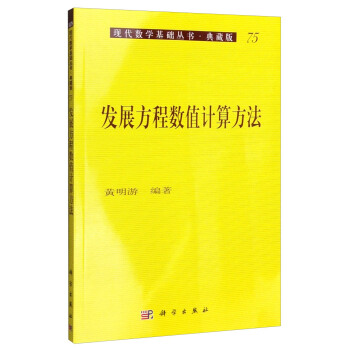
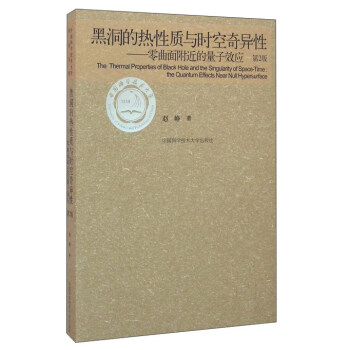
![国外数学名著系列(影印版)9:计算流体力学原理 [Principles of Computational Fluid Dynamics] pdf epub mobi 电子书 下载](https://pic.windowsfront.com/11946896/5773bd83N3fbec5ba.jpg)

